|
4. Result of experiment with convective adjustment
|
[prev]
[index]
[next]
|
In contrast to the experiment with Kuo scheme
(subsection 3.4),
preference of the propagation direction of the grid-scale
precipitation activity in the experiment with moist convective
adjustment scheme is not evident in either of the upper- or
lower-level cooling experiment.
In the following,
in contrast to subsection 3.4,
we present
the composite structures for each of the eastward and westward propagating
grid-scale disturbances in the upper-level experiment only.
As for the composite structure of the lower-level experiment,
athough magnitudes of anomalies are different,
the overall characteristics do not differ greatly.
Fig.4.10 is the composite structure
referring to the eastward propagating grid-scale precpiptation
of the upper level cooling experiment (adj-c).
It is similar to that for the eastward moving precipitation activity
of the upper level cooling experiment with Kuo scheme
Fig.3.10.
Namely,
it has the characteristics of equatorial Kelvin waves;
there exist
the westward phase tilt exemplified as temperature anomaly
in the longitude height section at the equator
(upper right panel of Fig.4.10),
the dominance of the east-west wind anomaly against the north-south
(lower panels of Fig.4.10),
and the equatorially confined pressure anomaly
(lower panels of Fig.4.10).
The difference from that with Kuo scheme is
that the negative temperature anomaly
appearing from the lower levels to the upper western side
is intense and extends to the higher altitudes.
The intense lower level cooling is considered to be caused by
the effect of moist convective adjustment scheme.
The characteristics of the composite structure
in the lower level cooling experiment (not shown here)
are fairly similar to those for the upper level cooling experiment
except that the intensities of anomalies are much weaker.
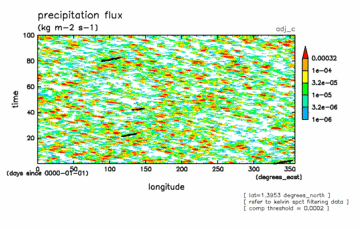
|
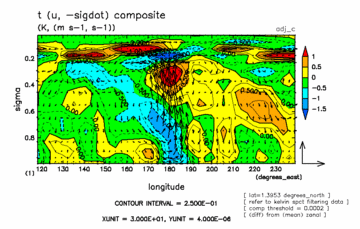
|
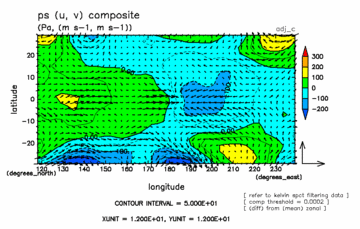
|
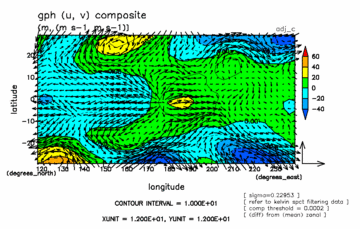
|
|
Fig.4.10:
The same as
Fig.3.10 but for
composite structure referring to
the eastward propagating grid-scale precipitation events
for the upper-level cooling experiment
with moist adjustment scheme (case adj-c).
(upper left)
longitude time section of precipitation at the equator.
Unit is [kg m-2 s-1]
Black dots indicate the points of reference chosen for the composite.
(upper right)
Longitude height cross section of
temperature anomaly at the equator from the longitudinal mean
(unit is [K]).
Arrows indicate wind velocity anomaly from the longitudinal mean
(the arrows at the lower right corner indicates
reference magnitudes of [30m/s, 4x10^-6 s-1], respectively).
(lower left)
Surface pressure anomaly from the longitudinal mean
(unit is [Pa]).
Arrows indicate wind velocity anomaly from the longitudinal mean
(the arrows at the lower right corner indicates
reference magnitudes of [12m/s, 12m/s], respectively).
(lower right)
Height anomaly from the longitudinal mean
in the upper troposphere (¦Ò=0.23) (unit is [m]).
Arrows indicate wind velocity anomaly from the longitudinal mean
(the arrows at the lower right corner indicates
reference magnitudes of [12m/s, 12m/s], respectively).
|
Fig.4.11 is the composite structure
referring to the westward propagating grid-scale precipitation
of the upper level cooling experiment (adj-c).
It fairly resemble that for the westward moving precipitation activity
of the lower level cooling experiment with Kuo scheme
(Fig.3.11).
Namely,
the temperature anomaly is concentrated
at the area of upward motion (precipitation area)
and has no phase tilt as exemplified
in the longitude height section at the equator
(upper right panel of Fig.4.11), and
the wind anomaly in the upper troposphere is isotropic
(lower right panel of Fig.4.11).
The features that is absent in the results with Kuo scheme are
the strong negative temperature anomaly in the lower levels
and the cyclonic rotation (anti-clockwise in northern hemisphere
and clockwise in souther hemisphere) of the low level wind response
around the equator.
Similar to the low level negative temperature anomaly
for the eastward moving precipitation activity mentioned above,
the intense lower level cooling is considered to be caused by
the effect of moist convective adjustment scheme.
Emergence of cyclonic wind anomalies may result
from the wider north-south extent of the precipitation
activity (not shown here) in the experiment with moist convective adjustment
scheme compared to those with Kuo scheme.
Similar to the results for eastward propagating disturbances above,
the intensities of anomalies
in the lower-level cooling experiment are weaker
than those in the upper-level cooling experiment.
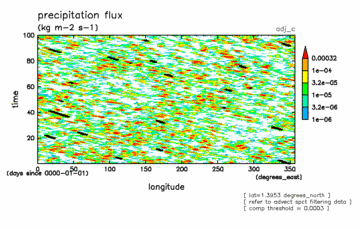
|
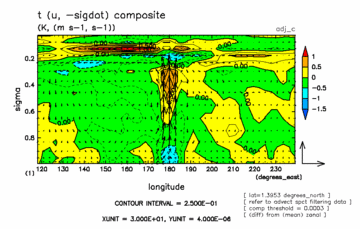
|
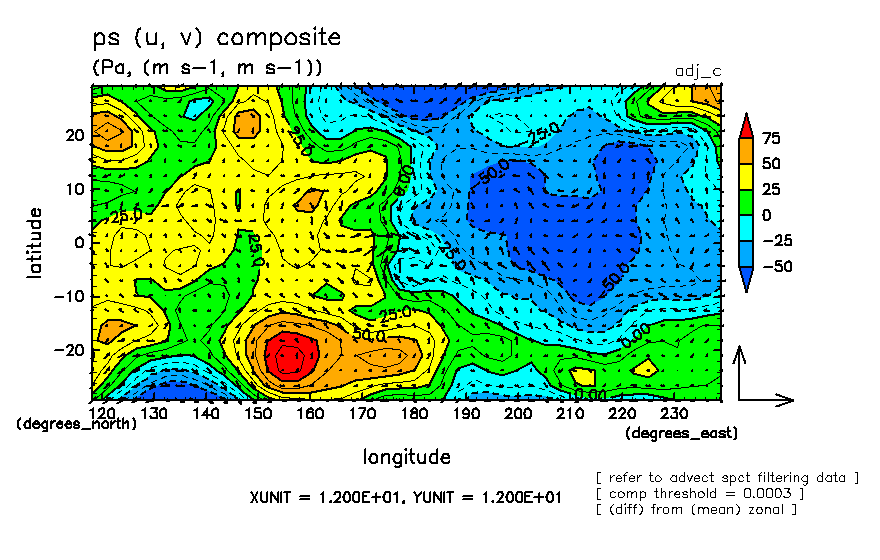
|
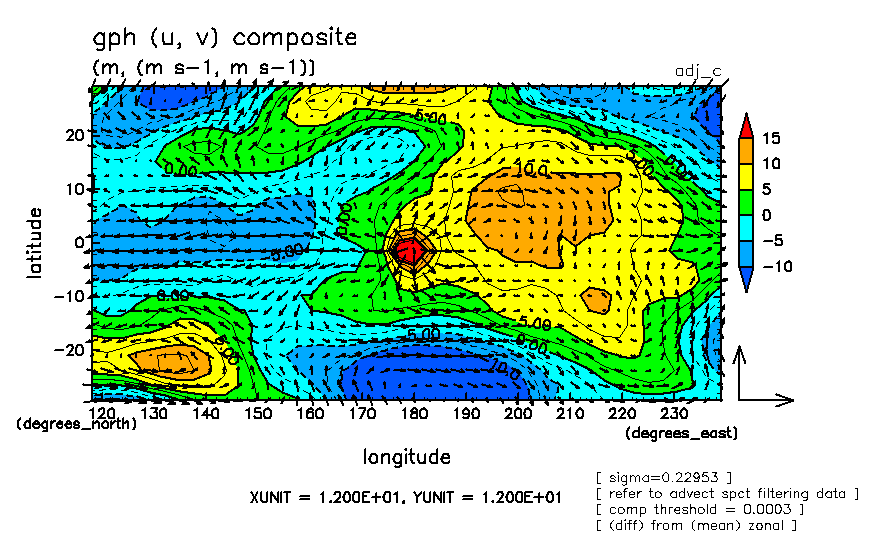
|
|
Fig.4.11:
The same as Fig.3.10 but for
composite structure referring to
the westward propagating grid-scale precipitation events
for the upper-level cooling experiment with
mosit adjustment scheme (case adj-c).
|







